How to Use A/B Testing to Optimize Your Email Marketing


Published on: October 26, 2023
As inboxes keep filling up, marketers are constantly trying to stand out. From personalization to limited-time offers, they use many strategies and techniques to get the attention of their buyers, but what really works? Instead of making assumptions, take a data-driven approach. A/B testing your email campaigns can help you not only determine what is and isn't working in your email strategy but also achieve better results without increasing expenses.
The value of A/B testing
A/B testing, also known as split testing, involves comparing two different email versions to determine which performs best. The most common way marketers utilize A/B testing is by sending an email with two different subject lines to see which one gets the highest open rate; however, there are many variables to test. Ultimately, the goal of A/B testing is to understand what drives email engagement and conversions. From these learnings, marketers can modify and make their email marketing more effective. It's a trial-and-error process, but a sure-fire way to prove what works.
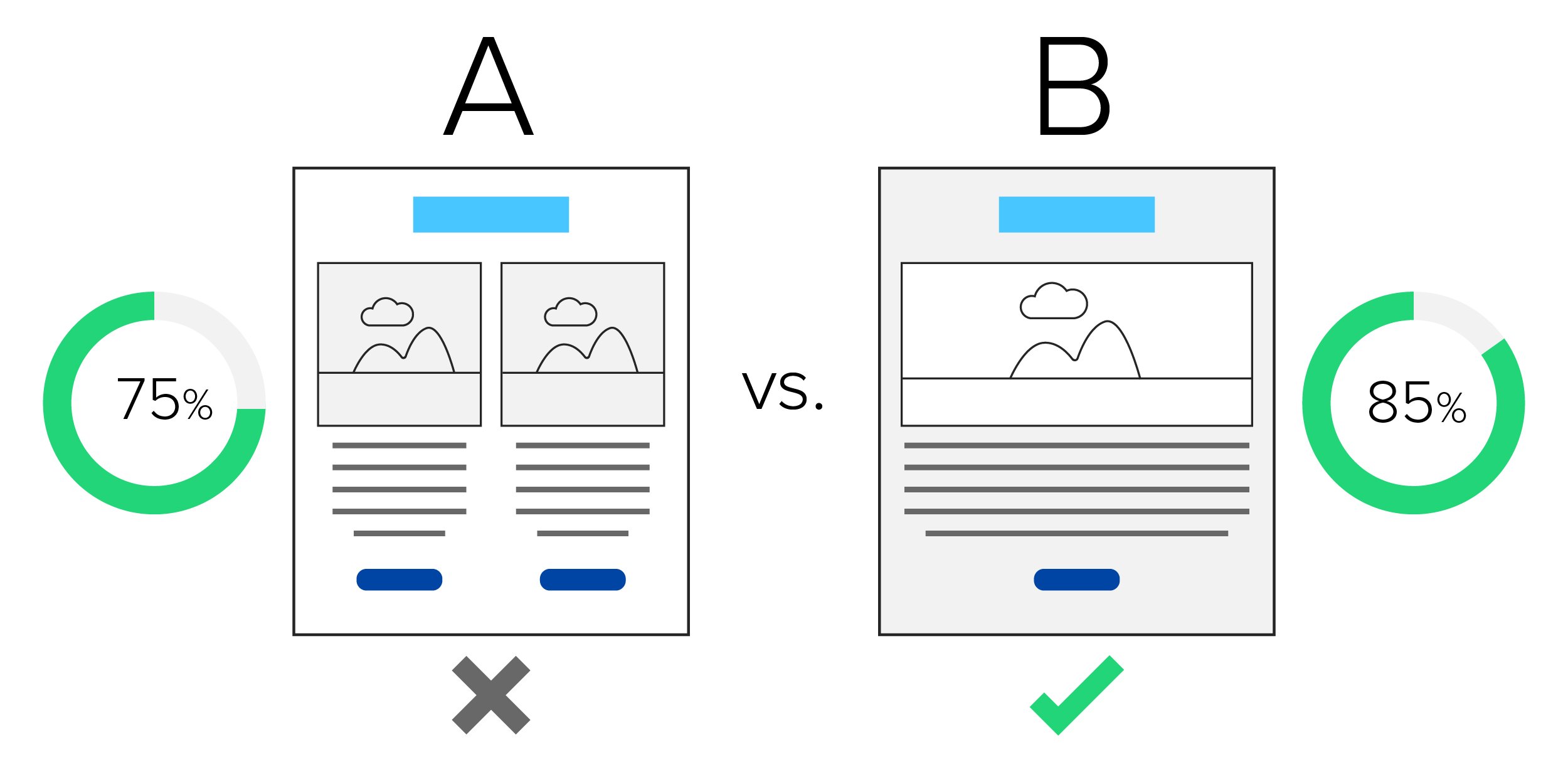
Best practices
When setting up an A/B test, be sure to follow these guidelines:
1. Isolate test variables
When conducting A/B testing, it’s crucial to ensure that test variables are isolated and not simultaneously affecting the same email performance metrics. For instance, it is acceptable to test one variable's impact on email open rate and another variable's impact on click-through rate. However, testing two variables that both influence the open rate should be avoided. Similarly, comparing different creative layouts or button styles within an email is acceptable, but not within the same email. Testing multiple variables concurrently will make it difficult to identify which variable had the greatest impact.
2. Keep a control version
Once you get started with A/B testing, it's important to maintain a control version of each email. Although the goal of A/B testing is to find out what generates the most engagement, that doesn't mean you should delete your original emails. You may want to use them again in the future, or you may want to refer to them when updating your marketing strategy. Having a control version of each email helps you keep track of what’s been tested and what hasn’t yet. If you delete or overwrite your original messages, you won't be able to go back and pick out new elements to use as variables.
3. Randomize your subscribers
It's important to randomly split up your subscriber list to conduct A/B testing. By using randomization, you ensure that the test groups are representative and unbiased, allowing accurate comparisons between different variations of your email campaigns. This practice minimizes the risk of skewed results due to factors like audience preferences or external influences. Ultimately, it enables you to make data-driven decisions and optimize your email marketing strategies for better performance and higher chances of engagement.
Email variables
When conducting an A/B test, there are several variables to experiment with but for accuracy, it’s best to measure one variable at a time. Additionally, having a statistically significant sample size and established tracking metrics are important to yield the best results.
Subject lines
Preview text (salutation)
Sender name
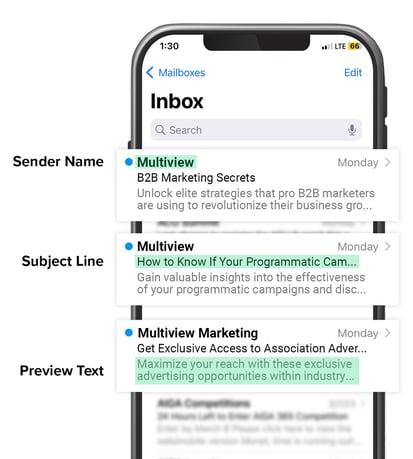
Visuals
Design elements

Copy formatting
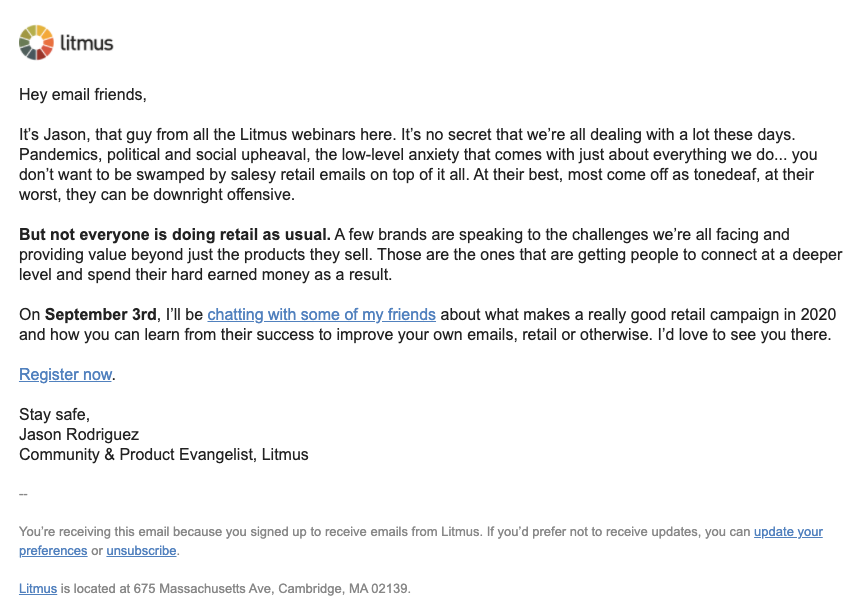
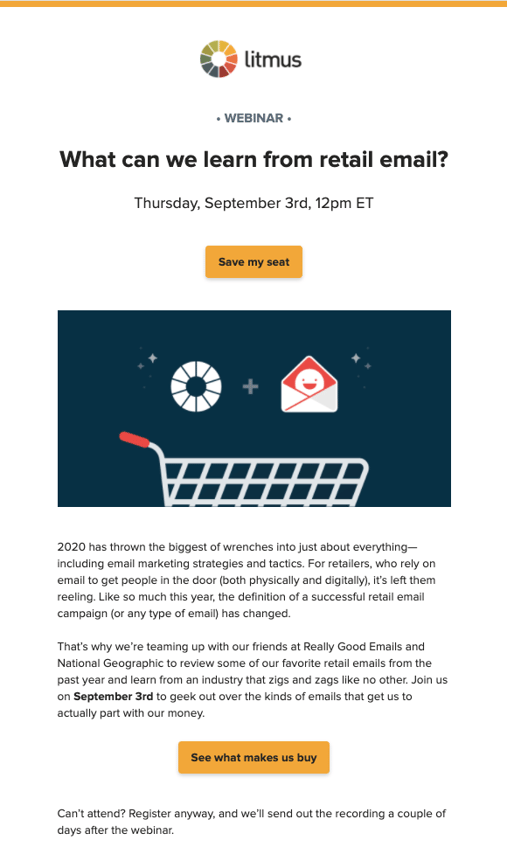
Offer structure
CTA
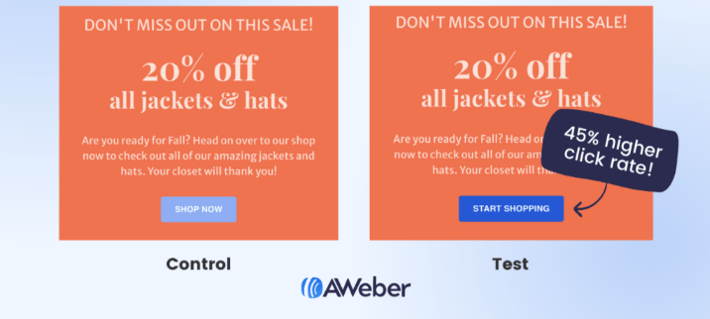
Timing
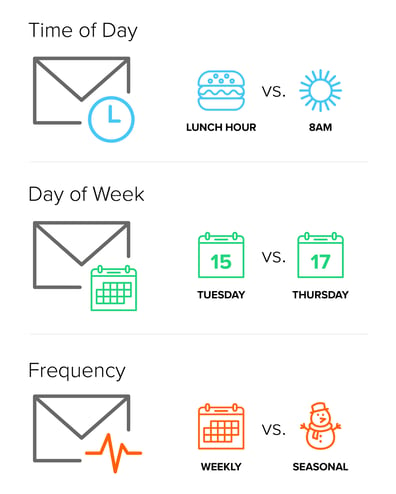
Conclusion
A/B testing offers valuable insights for optimizing email marketing performance and engagement. By testing variables like subject lines, content layouts, timing, and more, businesses can draw actionable conclusions to improve future results. Continuous testing and optimization are key for delivering personalized content and building stronger subscriber relationships.
Explore the latest B2B topics and gain insight to adapt best practices for success and help grow your business.
Search remains one of the most effective ways for buyers to discover solutions, but the expectations for what earns visibility have evolved. A modern...
MoreSearch has always been a moving target, but the pace of change has accelerated dramatically with the rise of artificial intelligence. Businesses that...
MoreMarketers are caught between two competing realities: the pressure to prove ROI today and the need to invest in future demand. Every dollar is under...
MoreComplete the form below and we’ll get in touch with you right away.
You are now in accessibility mode. To restore settings to default, click the accessibility icon on the right hand side.